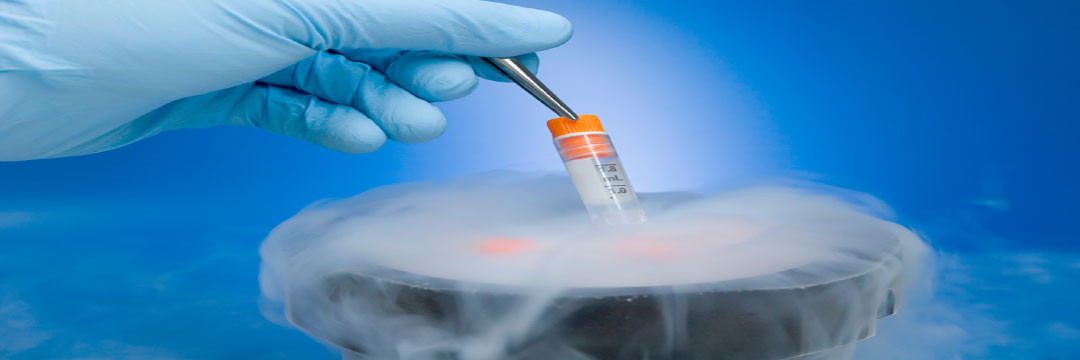Direction and Trends in Cryopreservation

Egg preservation and embryo freezing is a new experimental technique, where-in, a woman facing infertility, due to medical-condition or social-reason; undergoes egg freezing and storage. The eggs thus obtained, are placed under cryopreservation, for later-use when they are older.
Egg freezing and cryopreservation is preceded by blood examination, to check the Inhibin-B levels. The Inhibin B is a fertility-hormone produced by ovaries. A higher Inhibin-B level in blood is indicative of higher presence of eggs or oocyte in fallopian-tube. The oocyte-retrieval is guided by the growth of ovarian follicle, through pelvic-ultrasound examination. The process allows GP to obtain images of inner soft-tissue and body cavities in the ovarian follicle. At ovary-follicular size of 1.5mm, a hormonal injection leads to the release of the eggs.
The hormonal-dose-amount administered to facilitate egg donation is identified, on the basis of the body mass index and ovarian reserve. The selected donor is given hormonal injection on day 2 of the cycle and oocyte retrieval for cryopreservation is conducted between day 12 and day 14.
ICMR guidelines recommend extraction of 12 eggs; a number that can be stretched to a maximum of 18 eggs in a single attempt. The egg damage, in duration of cryopreservation and storage, is prevented, through removal of water, from the eggs & protection in anti-freeze solution. This prevents formation of ice-crystal inside the eggs, to prevent internal damage.
The eggs so stored are thawed manually to achieve fertilization and implant in womb. A newer technique known as vitrification first introduced in 2006, is utilized in cryopreservation. The eggs are chilled to freezing minus temperatures in a fraction of seconds using flash-freezing.
Recent estimate in lab studies, gives a birthrate in IVF with frozen eggs to a positive estimate of 36 % to 50%, which is comparable to fresh eggs, derived from ovulating woman, in early adult age. The preliminary lab investigations suggest that a frozen oocyte may last ten years, while the shell-life of stored egg may be much longer than ten years. An independent estimate provides that 20 frozen eggs may be required to achieve a single pregnancy in woman.
The present ICMR guidelines state that donor in age bracket 21-35 years can donate a maximum of six times with minimum three month gap duration in-between every donation. The prospective donor should have a prior psychological counseling by donor agency or ART bank, before starting the process of egg donation or embryo freezing. The donor female is then tested for infectious diseases and genetic disorders like Thalassaemia. The anonymity clause in donor arrangement encourages commercial donation of gametes egg and sperm cells.
Physical resemblances of Indian ethnicity with Mexican egg donors, creates a market demand for the Mexican egg donors in Indian ART clinics. There is an upsurge in demand for Caucasian & Thai egg donors by foreign couples undergoing treatment in India.
MNCs have recognized the potential that egg donation and embryo freezing hold on parenting desires of the working employees. Apple Corporation has recently offered maternity benefits on coverage towards egg freezing procedures & storage costs, for female-employees, starting January 2015.
If you have any query related to this, Please let us know by submitting your queries in the section mentioned below or write us at [email protected]
